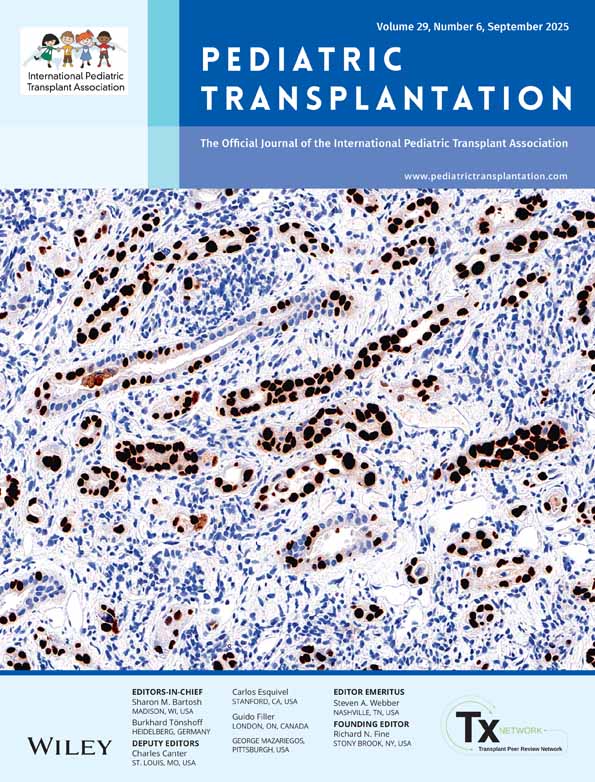Successful renal transplant outcome after intravenous gamma-globulin treatment of a highly sensitized pediatric recipient
Abstract
Abstract: Approximately 10% of patients on the renal transplant (Tx) cadaver waiting list have high (> 20%) panel-reactive antibody (PRA) levels to human leukocyte antigens (HLA). Intravenous gamma-globulin (IVIG) has been shown to reduce anti-HLA cytotoxic antibody levels through an anti-idiotypic antibody-blocking effect. We report a successful renal Tx outcome in a 7-yr-old-girl with high PRA levels owing to a failed renal Tx who experienced a significant reduction in PRA levels (from 96% to 0%) concomitant with IVIG therapy. IVIG was infused weekly (500 mg/kg/week) for 3 consecutive weeks every 12 weeks. Thirty-four months after starting IVIG therapy, the PRA activity dropped to zero and IVIG was stopped. Then IVIG therapy was resumed after 8 months due to a rebound in PRA activity to 52%. Forty-four months after starting IVIG therapy, the patient was cross-matched with a cadaver donor who shared three antigens with the first living donor. The cross-match was positive with the recipient's sera obtained prior to IVIG therapy and negative with the recipient's sera obtained post-IVIG therapy. A successful cadaver renal Tx was performed using anti-thymocyte globulin (ATGAM) induction therapy and a tacrolimus-based immunosuppression protocol. IVIG was given (1 g/kg) prior to Tx and at day 4 post-operatively. A single mild acute rejection episode occurred 10 days post-transplantation that responded to pulse methylprednisolone therapy and an increase in the tacrolimus oral dose. We conclude that a prolonged course of IVIG infusions, without immunosuppressive medications or plasmapheresis, is likely to have been beneficial in modulating the immune response in this highly sensitized recipient. Randomized multicenter trials are required to define the role of IVIG in this specific population.




